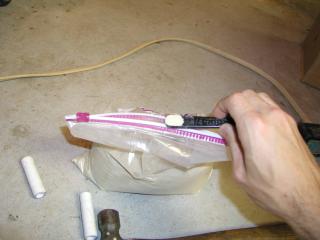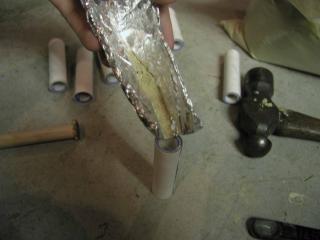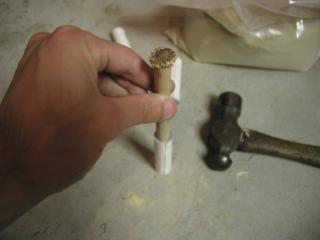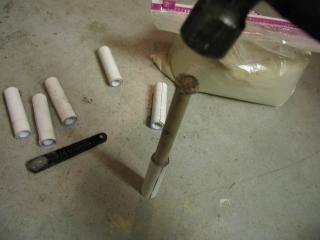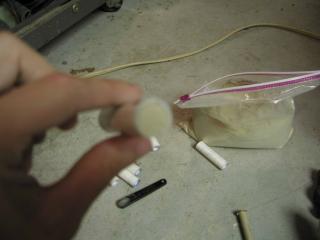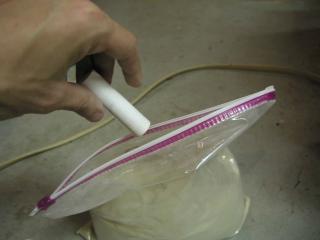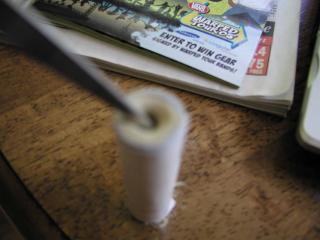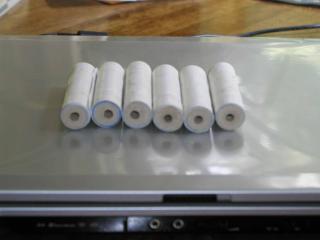What is bentonite clay? Well it is used for a bunch of diffrent application, from drilling to pond and even to cleanse your bodies toxins.
Where can I obtain this stuff? Froogle.com will pull up a bunch of diffrent suppliers, but I found my best deal on ebay from seller "koinaturalenhancer". He uses the stuff as pond fish health energizer. Not quite sure how it's supposed to work, but supposedly it makes the fish scales gleam brighter. Anyway, its really fine mesh stuff. And in this application, the finer the bentonite clay, the better.
Ok, these instruction should be somewhat less complex than some of the other ones I have written in other section because this process is quite simple to follow and repeat.
What you need for this section:
1. Motor tube (duh)
2. 1/4 teaspoon measuring device
3. 7 inch long piece of 1/2 inch hardwood dowel. (I sanded the bottom of my rammer dowel so its a bit tapered on the ramming end to make it easier to work with, but this is not nessecary.)
4. Hammer
5. Bentonite Clay
6. Funneling Device (I used folded piece of aluminum foil, but there are better devices.)
7. Power drill.
8. 3/16ths power drill.
9. Scissors (or something to scrape the clay.)
Step 1:
Take your motor tube and find the flatest side you have and place that face down and stand the tube on a hard stable, flat and clean surface. The flatter the survice the better of a nozzle you'll have. In this case I am using the cement floor in our basement workshop.
Step 2:
Measure out a 1/4 teaspsoon scoop of bentonite with your measuring device.
Step 3:
Funnel the 1/4 teaspoon of bentonite clay into the motor tube with your funneling device.
Step 4:
Place the ramming dowel into the tube slowly so the clay doesnt run out the bottom or along the sides because of the air pressure you just created.
Step 5.
Hammer the rod while holding onto the ramming dowel and the tube. Don't hammer to hard, just moderately. After a little practice you will get teh hang of how hard you need to ram the clay.
Step 6.
Once you give it about 6-8 poundings, take the rod out slowly so the dust doesn't fly all everywhere.
Step 7:
Repeats steps #3 - #6 two more times until you have pounded 3 layers of bentonite clay into the tube.
Step 8:
By now you have noticed you have 3 layers about a half an inch think of compressed and hard bentonite clay. Magical stuff, huh? Ok, now turn the motor tube upside down over the container holding your clay to empty the lefover dust out.
Step 9:
Now take your power drill and 3/16th drill bit and drill a hole in the middle of the tube through the clay.
Step 10:
Now take some scisscors and use the blade to carve a small cone cylinder into the hole to direct the exhaust gases. (This may or may not help using the fuel impulse we are gonna use, but at least it looks cool.)
Step 11:
Repeat all these steps for all the left over engine tubes you have.
Alright, moving along quite nicely, next we make the fuel:
Section 3: KN/Sucrose Fuel


